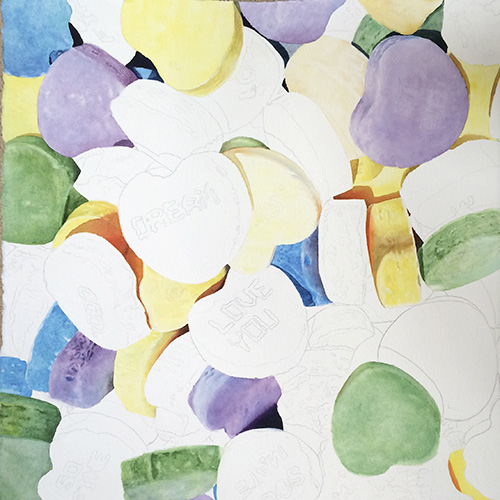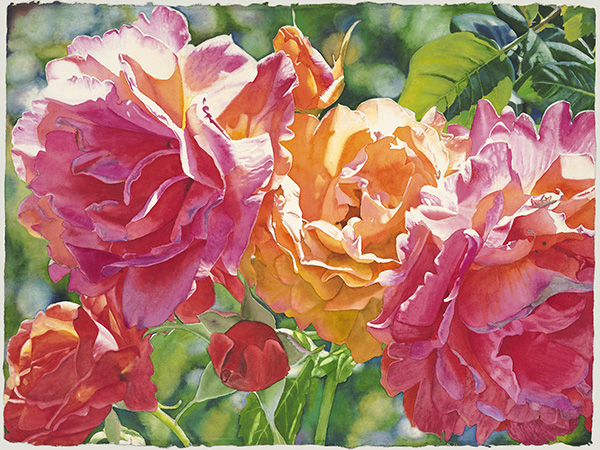January 19, 2016 – Left and right brain – not what we thought!
- At January 19, 2016
- By Cara
- In Life Stories

Listen to this post:
There are a couple of themes that have taken ahold of this life of mine – one of them is a seemingly insatiable curiosity, about how we work as humans, why we do what we do, how our consciousness grows and changes, and leads to the evolution of our species. And the other is the dance between the masculine and feminine – not necessarily male and female. Rather than physical biology, I mean energies and modes – yin and yang, passive and active, receptor and provider – elements that we all embody and live out to varying degrees.
These two elements have come together recently in some new discoveries. My Sister Mary (my spiritual-director, not my sibling) pointed me to Iain McGilchrist – a psychiatrist and author who wrote a book called, “The Master and his Emissary: The Divided Brain and the Making of the Western World.” I’ve started reading it and it’s interesting but dense, and I’m not making much headway. So I’ve found other resources – including a TED talk and a much shorter e-book, “The Divided Brain and the Search for Meaning” (which is downloadable for only $.99) that gave an idea of what he’s discovered and the conclusions he’s made. It’s completely fascinating to me, and it’s something that I think is useful to our lives and art-making.
In it, I’ve learned that how we think of the left and right brain, means something completely different than we thought. Common thinking of the left and right brain, have been along these lines: the left brain is rational, logical, language and math-oriented and deals in symbols, while the right brain is spatial, emotional, and creative and sees the world in shapes and curves and lines – rather as “things.” It’s been known in the scientific community for a while, that this is false. We use both halves of our brains for language, for visuospatial imagery, emotion and reason. Yet, there is a very distinct difference in our two hemispheres, both physically and how they operate, as is revealed in stroke patients who lose parts of their brain function.
What he reveals is this. It’s not so much what the two halves of our brains do, it’s how they do it that is the big differentiator. Here’s how:
Purpose is to narrow down to certainty
Narrow focus that gets and grasps
Pays attention in service of manipulation
Deals in the world of the known and understood
Render things explicit
Tends towards fixity
Sees what it expects to see
Likes the simplicity of the map
Sees the world as discrete elements
Either / or
Purpose is to open to possibility
Sustained attention with vigilance
Pays attention in service to connection
Deals in newsness – drawn to what is fresh, original, unique
Takes in the implicit meanings in things
Tends towards flows
Sees what’s really there
Likes the complexity of the territory the map represents
Sees the world as a web of relationships
Both / and
Looking at this list, I can imagine how some of us may have a preference for the right brain. It goes without saying, though, that we need both in order to function. So that we are not on overwhelm, we have to be able to draw upon what we know and understand already. I cannot imagine a life where everything was new all the time! I remember when I was a teenager, learning to drive a manual transmission car. It took all my attention, to manage the timing of releasing the clutch as I pressed the accelerator, in order to not have the car lurch or have the engine die.
The way I interpret what he says, this was an engagement of my right brain. But then once I became skilled, how to do this became second nature, and I didn’t have to think about it. My intense focus is no longer required every time I get behind the wheel – but rather my left brain guides my driving based on what I already know. Please note, though, I could be entirely wrong here. What he says may not apply to motor skills (that is mine, not the cars!). It’s just that this was a really powerful memory of learning something new and – to me – it seems relevant!
It’s also how it goes when we learn to paint – we rely upon our left brains. There is knowledge – about paints and pigments, about paper and brushes – and our experiences of working with them, that we use to do the work of making our art. If every time we sat to paint, we were enthralled with everything, as if it were the first time we used it, we’d never progress in our skill and be able to evolve our capacity to express what is inside us – in the form of paintings.
I also think that we use our left brains, when we evaluate our work as we go. When I’m in the process of painting something that doesn’t quite “live” like I want it to, I use my powers of evaluation and comparison, to determine what information is there for me in the photograph I’m working from, that differs from what I’ve painted. Is it darker or a different shape, what might have I left out? I also think that it’s our left brain that causes us a lot of heartache, in its criticism of what we’re painting – especially as it is in progress. The left brain can tend to fixate on little parts of the painting, that aren’t “right” in its estimation. Just recalling the experience of that kind of thinking, and I feel heavy inside.
But it’s our right brains that hold the big picture in our work. This is where we respond to a composition, where we sense the spark of inspiration – that “I want to paint this,” where we find things interesting. It’s the where we find the motivation to do our work and the meaning in it. It’s also our right brains that have us really see what’s there – which is consistent with what I’d previously though was domain of the right brain.
I take a photo of everyone’s painting, at the end of each painting session. They often – especially at the beginning of a painting – tell me there’s nothing to take a picture of. But I insist, as the germ of their genius is already there, and it becomes really useful and interesting, once the painting is done. As well, it’s fleeting – as soon as more is painted, that particular state is no more. When the paintings are further along, they are often surprisingly pleased when they see their work in my phone. Since the right brain sees the big picture, when we are in progress with our work, it takes distance to catch the glimmers of what’s coming to be. The image in the phone provides this distance. We can’t make the critical judgements, so we can see the painting more as everyone else does – and we see that it’s not that bad!
I just had a conversation with my coach Lissa, who was bowled over by my latest painting – Firelight. Her reaction was powerful, emotional, and it touched her so deeply, it brought her to tears. This was after I just wrote two weeks ago that, “it’s not my most inspired work, but I think it’s ok.” She clearly saw this painting in a right-hemisphere way, while I was/am still stuck seeing it in my comparing left-brain. I am grateful that in time – though sometimes it takes months – I do develop the capacity to see the spirit in my artwork as others do – who were not in the nitty-gritties of painting it.
We live in a world that is dominated by our left brain sensibilities: rules, facts, being “certain” about things. Iain McGilchrist makes a strong case, for the need to bring our right brains into our lives more – he even intimates, that our survival may depend upon it. We need to grow our capacities to see the inter-relatedness of everything, to have our intuition guide our decisions, to seek meaning in life. He says this: “the left hemisphere’s values are those of utility and pleasure. But meaning cannot come from this linear project any more than happiness can be pursued. Happiness and fulfillment have to be the by-products of something else, of looking elsewhere.” We can practice this in our creative endeavors. This says to me, that we have to make our work largely with one part of our capacities, but then we need to see it, receive it, find its true value and meaning with the other.
I’d love to know what you think.
With my love,
Cara



Mary neill
Love gilchrist, love your insights. Your RELENTLESSLY RIGHT BRAINED. BUDDY MARY
January 10, 2017 - Beauty Everywhere - Life in Full ColorLife in Full Color
[…] but it’s exactly the left brain vs. right brain modes of perception that Iain McGilchrist has revealed for me. I have a curious left brain – that serves me well, but in the area of love and beauty, I’d […]
January 24, 2017 - Holding on to Humanity - Life in Full ColorLife in Full Color
[…] and right brain ways of thinking. It might be worth a re-read of the comparison of traits in my post from last year to get a better sense, but basically the left brain has narrow focus, sees discrete parts and is […]